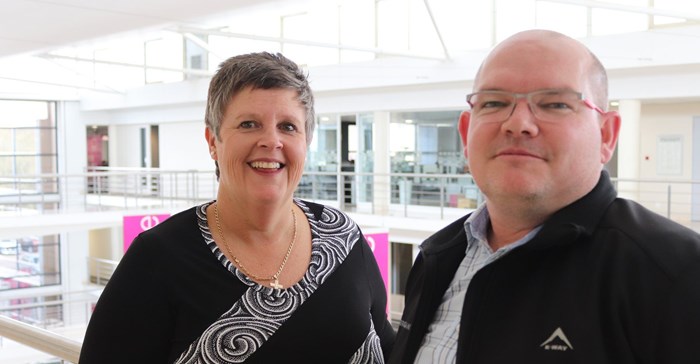Many of the gaps where healthcare facilities are haemorrhaging profits are related to inefficiencies and pain points that result from the dissatisfaction of other stakeholders in the network, such as patients and medical staff.

Leigh Venter and Henri la Grange. T-Systems South Africa
Patient satisfaction has been linked to healthcare facilities’ financial performance, as most patients who are not happy with their overall “patient experience” are prone to seek a different healthcare provider. At the same time, job satisfaction of healthcare professionals impacts on a hospital’s ability to attract and retain talent, with medical staff likely to stay at a facility that offers the best work environment and equipment.
In addition, outdated and inefficient systems can profoundly impact costs at hospitals and clinics, and these can easily spiral out of control if not modernised and updated.
A recent study by McKinsey urges healthcare facilities to reinvent the business by aggressively reallocating capital and resources toward future business models, either through investments in technology (including medical science and technology, machine learning/artificial intelligence, advanced analytics, or digital), care delivery models (distributed sites of care), managed care models, or all three.
Run like corporations
While the provision of quality healthcare and treatment is the core function of healthcare facilities, it must be kept in mind that these organisations need to be run like corporations.
“Apart from providing a vital service to the community, hospitals and clinics are still businesses. They have external stakeholders that they report to and have a responsibility and accountability to these shareholders in terms of their business performance,” says Henri la Grange, build SAP line manager at T-Systems South Africa.
Healthcare facilities should look at transforming themselves into intelligent enterprises by utilising information and making intelligent decisions. “Healthcare will change more rapidly in future, because of the introduction of the internet of things (IoT) and artificial intelligence (AI). Healthcare facilities must focus on their biggest challenges and use innovation to improve processes and how people use these systems,” he says.
Appropriate staff allocation, stock management of the in-hospital pharmacy and accurate billing and ordering – the three main areas known to impact a hospital’s profitability – can be addressed through the implementation of technology, such as an integrated IT healthcare system, says
Leigh Venter, stream lead for healthcare and logistics at T-Systems South Africa.
Streamlining
“The pharmacy is one of the biggest revenue drivers for hospitals, so the strategy is to buy stock at the best prices, which often requires dealing with multiple vendors. An integrated ERP system can control procurement and stock levels and alert a facility when it needs to change vendors,” she says.
“Similarly, accurate billing and ordering of stock and equipment can also be streamlined through technology. For instance, medication can be taken off the shelf and scanned, allowing for a patient to be billed in real-time. Mobile billing takes this even further, allowing for billing to be done at the bedside, without relying on barcode stickers that can get lost or mixed up.”
Venter says the deployment of technology is ultimately about giving healthcare facilities control of their entire environments, which will streamline processes and assist with business administration, thus improving profitability.
“Healthcare is a changing environment and how we provide healthcare has changed significantly. It is not just about patient care, but also the administration side of the business. As a result, we must continue changing and looking at our systems and how we can improve,” she concludes.





































